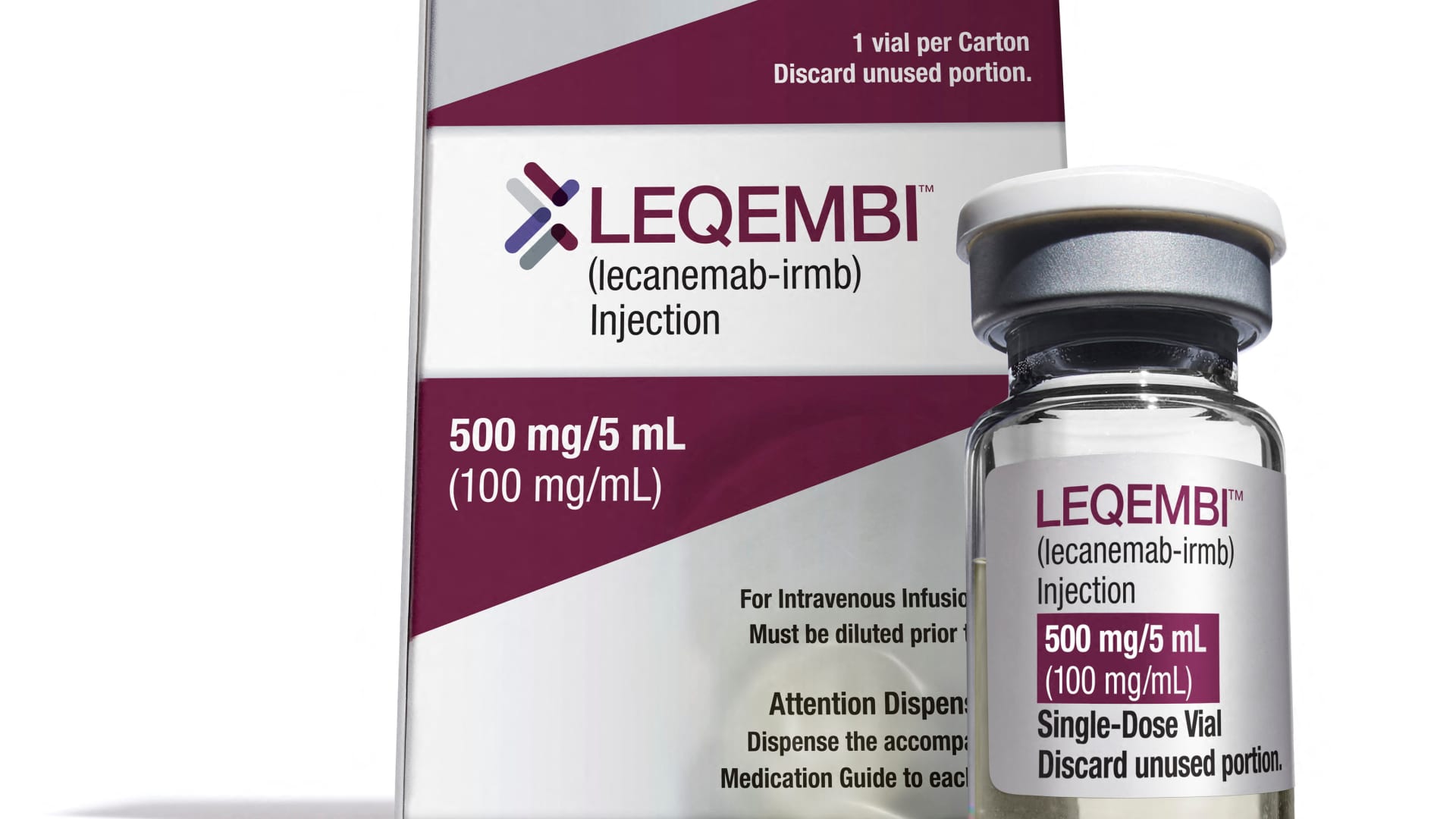
Eisai on Wednesday said an injectable version of the Alzheimer’s drug Leqembi showed promising initial results in a clinical trial, potentially paving the way for a new and more convenient option for administering the antibody treatment.
However, the injection did not cause lower rates of brain swelling and bleeding, which are Leqembi’s most concerning side effects.
Leqembi, made by Eisai and its partner Biogen, is the first medicine proven to slow the progression of Alzheimer’s in people at the early stages of the memory-robbing disease. U.S. regulators in July approved a version of Leqembi that is administered twice monthly through the veins, which is a method known as intravenous infusion.
But Eisai and its partner Biogen are hoping to win approval for a subcutaneous version of the drug, which would be an injection under the skin. That method would allow patients or caregivers to administer the Leqembi at home, freeing them from the need to travel to an infusion center such as a hospital every two weeks.
Eisai and Biogen said in a release that they plan to apply for U.S. approval of subcutaneous Leqembi by the end of March.
Eisai presented the preliminary results, from an extension to a late-stage trial that supported the approval of intravenous Leqembi, at the Clinical Trials on Alzheimer’s Disease conference in Boston. That study tested subcutaneous doses of Leqembi and measured the drug’s safety and effects on a protein called amyloid – also known as plaque – that builds up in the brain and is associated with Alzheimer’s.
The study showed that a set of two injections administered once weekly produced similar results after six months to twice-monthly intravenous infusions in terms of safety, the concentration of the drug in the blood and its ability to clear plaque buildups in the brain, Eisai said.
The study specifically showed that the injectable form of Leqembi removed 14% more plaque than the approved intravenous formulation. Blood concentration levels of the drug were 11% higher with subcutaneous Leqembi than the other version.
But the newer form still showed side effects known as amyloid-related imaging abnormalities, or ARIA. The removal of plaques from the brain can be associated with brain swelling and bleeding – also known as ARIA-E and ARIA-H – which can be severe or even deadly in rare cases.
Almost 17% of patients who got weekly injections had ARIA-E, compared with 13% who got the drug via intravenous infusion. And 22% of those taking the shots had ARIA-H, versus 17% who received the other form.
Roughly 6.7 million Americans age 65 and older are living with Alzheimer’s, according to the Alzheimer’s Association. That group is projected to rise to almost 13 million by 2050.
One in three seniors die with Alzheimer’s or another form of dementia, which kills more people than breast cancer and prostate cancer combined, the association said. The neurodegenerative disease begins with mild memory loss but eventually impairs a person’s ability to think and carry out daily activities.
There is a wealth of research on Alzheimer’s, but it has been notoriously difficult to treat. Multiple drugs designed to target the disease have failed in trials. The sheer cost and length of that research further impede drug development. And in recent years, scientists have ignited a debate over the true cause of the disease and what the drugs should target.
